How often do you rely on incomplete data or your gut instinct to make decisions? How often does your team struggle with the same issue?
When your business does not have access to good data, you may encounter various problems that can negatively impact operations and decision-making processes. For example, a lack of reliable data can make it difficult to make informed decisions regarding resource allocation and workforce planning.
Workforce analytics software can help you identify areas for improvement, optimise your workforce, and make better-informed decisions about your talent strategy. Here are four areas where it improves decision-making:
1. Talent acquisition
Workforce analytics can improve recruitment and hiring processes by providing valuable insights into candidate sourcing and selection. By analysing past successes and failures, you can identify patterns and trends that inform future hiring decisions. For example, you may discover that specific jobs are more predictive of on-the-job success or that social media platforms are particularly effective at attracting top talent for particular roles.
Workforce analytics software can also identify successful candidate profiles through data analysis. By analysing high-performing employees’ backgrounds, skills, and experiences, you can create more targeted job descriptions and recruitment strategies to attract similar candidates. So you can ensure that new hires have the skills and qualities needed to succeed in the role.
Finally, workforce analytics can help avoid bias in hiring decisions. Traditional hiring processes can be fraught with unconscious bias. You can make more objective hiring decisions using analytics to remove bias from the equation. For example, you can use data analysis to identify the essential skills and experiences required for a particular role and then use an algorithm to score each candidate objectively based on those criteria.
2. Workforce productivity
Workforce analytics software can play a crucial role in increasing productivity by identifying bottlenecks, monitoring performance, and optimising workforce allocation and scheduling.
You can leverage analytics to identify productivity bottlenecks and inefficiencies, then understand where productivity lags and why by analysing workflow, processes, and outcomes. For example, a particular department might experience higher rates of error or rework; or a specific process might take longer than it should. With this information, you can take targeted steps to address the underlying issues and increase productivity.
Workforce analytics gives you the tools to optimise workforce allocation and scheduling based on data insights. You can allocate resources effectively by analysing employee availability, skills, and workload. For example, you may discover that certain employees are overworked or underutilised and adjust schedules or responsibilities accordingly. In response, you can maximise productivity while minimising the risk of burnout or disengagement.
3. Employee engagement
Employee engagement is a critical factor in the success of any organisation. Engaged employees are more productive, have higher levels of loyalty to the company they work for, and may be more likely to stay with the company long-term. Workforce analytics software can be invaluable for enhancing employee engagement by providing insights into what motivates and satisfies employees–- what work they find most rewarding and where best to utilise them in the future.
You can leverage workforce analytics to understand employee satisfaction and engagement levels. By analysing data on employee surveys, shift feedback, performance reviews, and other sources, you will better understand what drives engagement and what factors may contribute to disengagement. For example, you may discover that employees who receive regular feedback and recognition are more engaged than those who don’t or that employees in one team or department find their work particularly fulfilling.
Another way workforce analytics can enhance employee engagement is by predicting and addressing potential retention issues. By analysing data on employee demographics, turnover and engagement and identifying patterns and trends, you can take proactive steps to address potential retention issues before they become a problem. For example, you might find that employees in a particular department or with a specific job title are more likely to leave. You can then target the issues and create solutions, such as offering more training or development opportunities or through improved performance and goals management.
4. Workforce costs
Workforce analytics software also provides insights to identify cost-saving opportunities and optimise workforce spending.
By analysing workforce demographics, compensation, benefits, and other factors, you can understand where costs are highest and where to make cuts without impacting performance or employee satisfaction. For example, you may discover that some departments or job roles have higher turnover rates or lower productivity and consider restructuring or reducing headcount in those areas.
Another way workforce analytics can help reduce workforce costs is by identifying automation or process improvement opportunities. By analysing workflow, processes, and outcomes, you can identify areas where automation or other process improvements may reduce labour costs or improve efficiency. If your company has a high overtime bill every month, workforce analytics can provide insight into where the overtime occurs, areas where employees are working above or below grade regularly, or locations, teams and departments where overtime is excessively high.
Identifying the underlying challenges that instigate these occurrences allows operational and line managers to take corrective action and implement strategies to reduce costs and better manage their teams.
Conclusion
Workforce analytics software is a powerful tool for organisations seeking to make smarter decisions about their workforce. By leveraging data insights to inform recruitment, employee engagement, productivity, and cost reduction, you can create a more efficient and effective workplace, leading to improved business outcomes.
Why choose Tambla’s workforce analytics software?
Workforce analytics is a robust tool to keep in your workforce management toolbox. The right platform, tailored to your business, delivers actionable insights in real time so you can make informed business decisions.
Our Workforce Analytics software tells the story of your data via easy-to-understand, interactive dashboards. You can set it up to display only the metrics most relevant to your business and deliver them to the relevant people across the leadership team.
Visit our Workforce Analytics page for more information or to book a demo.
Related blogs
The power of user experience in boosting the employee experience
4 ways workforce management software powers process improvements
Payroll Comparison: A guide for improving payroll governance




